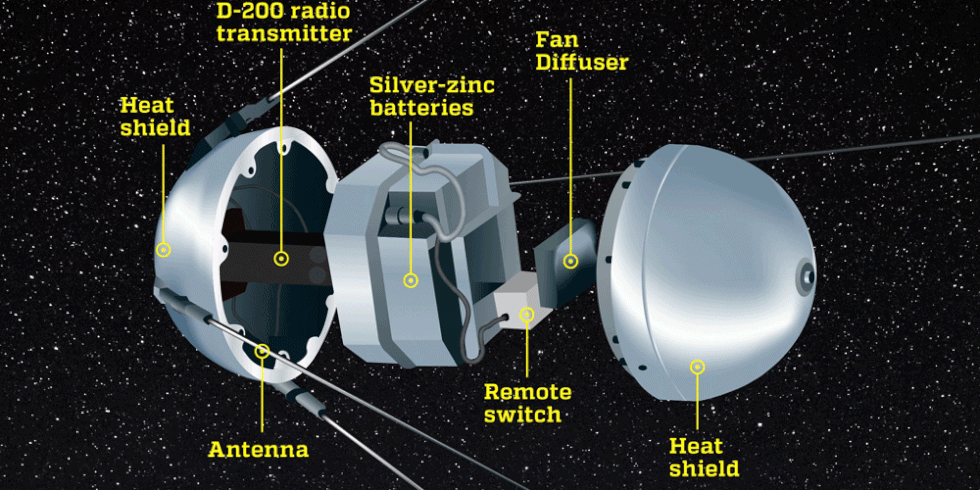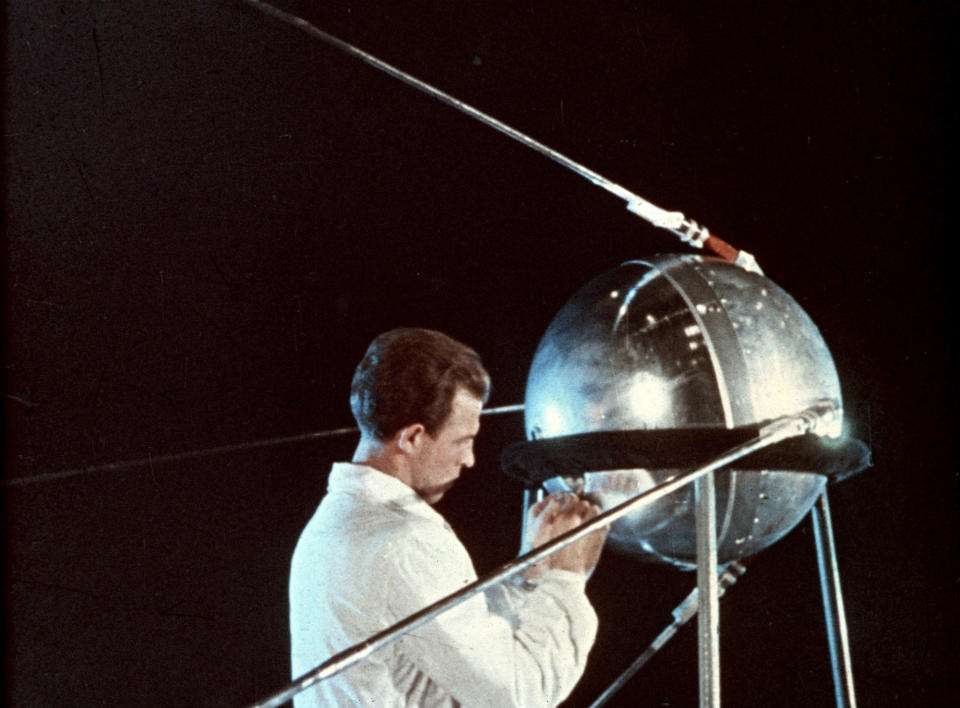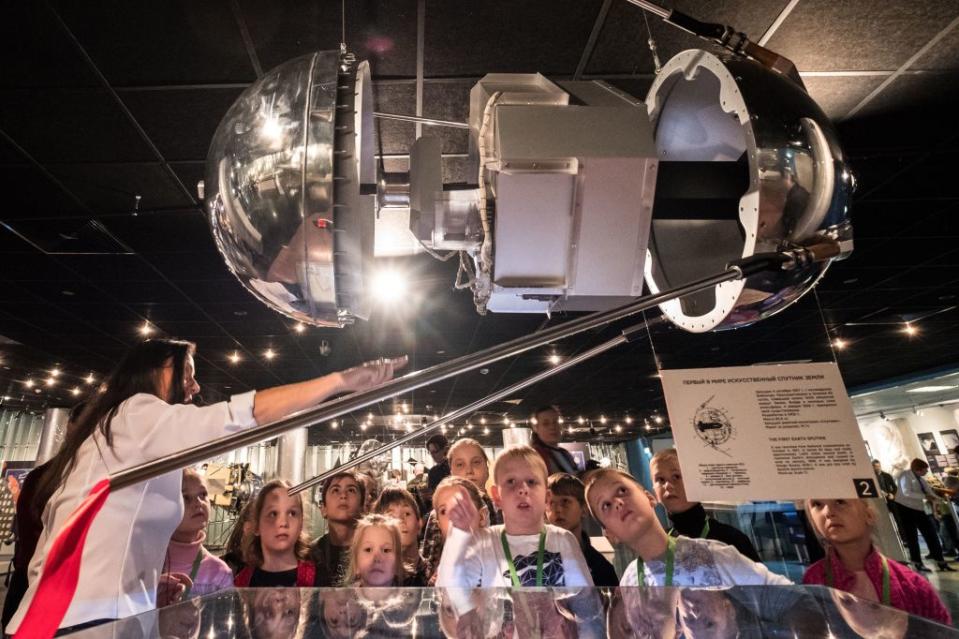How Sputnik Worked

Although Sputnik-1 will always be remembered as a shock to Americans, it is surprising how thinly veiled the development of the first satellite in orbit really was.
On April 15, 1955, the Vechernya Moskva newspaper announced that USSR had established the Inter-agency Commission for Interplanetary Communications with a goal of developing an Earth satellite for weather forecasting by taking photos of the Earth's surface. Translation: a spy satellite.
This "interplanetary committee" didn't work in total obscurity. On August 3, 1955, head of the commission Leonid Sedov told journalists that his country had already sent vehicles with animals into the stratosphere, and that the Soviet satellite project could come to fruition in the near future. In the following years, several other officials would make similar comments regarding the programs' progress, even announcing successful missile tests. Several drafts of an official statement regarding Sputnik even circulated among the top brass of the Soviet government, but were never published.
Even though Sputnik wasn't the Soviet government's main object (that would be the ballistic missile it was strapped to), it nonetheless was the opening salvo to what would become the greatest human endeavor in our collective history-the space race. But what could Sputnik-1 actually do and how was it built?

The Simplest Satellite, known more commonly as Sputnik-1, was designed as a sealed ball-shaped container with the diameter of 22 inches. Its main body was two hemispheres two millimeters thick and connected by 36 bolts. Resin O-rings ensured sealed interface between hemispheres.
The top hemisphere carried two antennas with two beams each. One antenna had 2.4-meter beams, another 3.9-meter beams. A special spring mechanism was designed to deploy antennas to the angle of 35 degrees toward the main axis of the container, immediately after the spacecraft had separated from the rocket.
"Sixty years later, Sputnik-1 is a scientific speck compared to the complicated instruments sent into orbit and beyond-but it's impact is arguably the biggest."
On the exterior, the top hemisphere was covered by a thermal protective shield one millimeter thick. On the inside it carried an attachment for the radio transmitter. The surface of both hemispheres was thoroughly polished for a better reflection of the sunlight to help track the satellite from the ground.
Inside Sputnik-1's shiny, heat resistant carapace rested these internal components:
Radio transmitter
Power supply system made out of three silver-zinc batteries;
Remote switch
Thermal system fan
Dual sequencer switch of the thermal control system;
Control thermal switch
Barometric switch
After its final assembly, the satellite was filled with nitrogen, achieving internal pressure of 1.3 atmospheres. Power supply to the radio transmitter and the thermal control system onboard the satellite were activated by a remote switch. It would be triggered by a sensor at the moment of separation of the launch vehicle and the satellite, and a one-watt radio transmitter emitted signals lasting 0.4 seconds with a wavelength of 7 and 15 meters.
If the temperature onboard the satellite ever exceeded 50 degrees Celsius or fall below 0 degrees Celsius, or if the pressure inside fell below 0.35 kilograms per square centimeter, thermal and barometric switches would be activated changing the length of the radio signal sent by the satellite. So to maintain normal temperature inside the satellite, a special fan would be activated, when the interior temperature would increase above 30 degrees Celsius. If temperature fell below 20-23 Celsius range, the fan would be turned off. A dual thermal switch was responsible for turning the fan on and off.

A total mass of the satellite reached 83.6 kilograms. A special transfer section was developed to connect the satellite to its R-7 rocket. The separation system was designed to first jettison the payload shroud that protected the satellite during the ascent through the atmosphere, followed by the satellite itself.
However, Sputnik's life was destined to be a short one since the satellite's electric batteries would only function for two weeks. But despite its limited payload and short runtime, the satellite did bring some scientific results.
By measuring how the satellite slowly spiraled down from its original orbit, scientists could determine the density of the atmosphere at various altitudes, because rarified air was primarily responsible for the decay of the orbit. Meanwhile, radio specialists could see how radio waves propagated through the atmosphere.

However, the very idea that the satellite made it into orbit immediately proved, or at least supported, many theories regarding rocket propulsion and other technical questions about how to place an artificial satellite into orbit.
Sixty years later, Sputnik-1 is a scientific speck compared to the complicated instruments sent into orbit and beyond-but it's impact is arguably the biggest. While more complicated descendants travel into deep space, surf among Saturn's rings, or provide a human home in Earth's orbit, it was Sputnik that proved that such an idea was possible.
You Might Also Like

